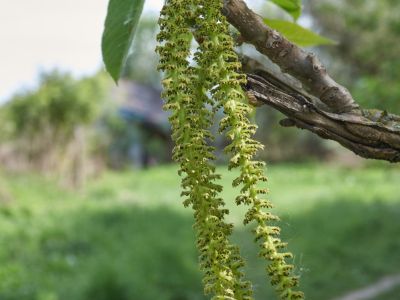Buartnut Tree Information
What is a buartnut tree? To understand this hybrid, you need to understand the story of butternut production. Butternut trees (Juglans cinerea), also called white walnuts, are native to North America. These trees are valued for their nuts, and also for their very hardwood. However, butternut trees are very vulnerable to a fungal disease called Sirococcus claviginenti-juglandacearum. This fungus causes oozing wounds in the butternut trunk, and is eventually fatal to the tree. Most (over 90%) of the butternut trees in North America are infected with this deadly disease. Growers have crossed butternut trees with other types of nut trees in an attempt to develop a disease-resistant hybrid. A cross between butternut trees and heartnut trees (Juglans ailantifolia) resulted in a viable hybrid, the buartnut tree. This tree gets its name from using the first two letters of “butter” and the last three letters of “heart.” This cross between butternut and heartnut trees bears the scientific name Juglans xbixbyi.
Growing Buartnut Trees
Those who are growing buartnut trees usually select the ‘Mitchell’ cultivar, developed in Scotland, Ontario. It produces the best buartnuts available. Mitchell buartnut trees produce nuts that look like heartnuts but have the tough shell and hardiness range of the butternut. If you decide to start growing buartnut trees, Mitchell is a good place to begin. It shows some resistance to the fungal disease. Buartnut trees shoot up fairly quickly, rising to six feet (2 m.) tall in one year. They produce nuts within six years, with myriad nut clusters on the branches. One tree can yield over 25 bushels of nuts every year.
Buartnut Tree Care
If you do start growing buartnut trees, you’ll want to learn as much as possible about buartnut tree care. If you are growing buartnut trees from seeds, you’ll need to stratify the nuts. To do this, place them in a cold, moist environment for about 90 days. Otherwise, they won’t germinate correctly. Once the stratification period is over, you can plant. Don’t allow the nuts to dry out before planting. Select a spot for the tree that is large enough to accommodate its mature size. Home gardeners take note: Buartnuts are tall, wide trees, and need lots of backyard space. The trunks can grow four feet (1 m.) wide, and the trees rise to 90 feet (27.5 m.) tall. When you are growing buartnut trees, make sure the soil is well-drained and loamy. A pH of 6 or 7 is ideal. Push each nut about 2 or 3 inches (5 to 7.5 cm.) into the soil. Buartnut tree care requires irrigation. Water the seedling well and regularly for the first year or two of its life in your backyard.
